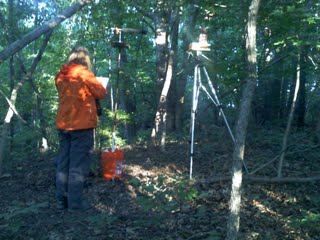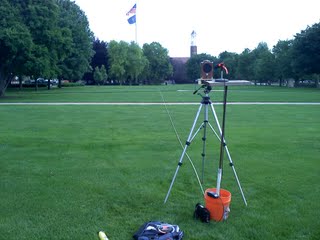
 Since the 1970s we have learned a great deal about how environments affect acoustics signals (thanks in part to big advances in recording and computing technology). In closed habitats, like forests, leaves and trees scatter high frequency sound and reverberation can interfere with the time domain of sounds. This means that in closed habitats low frequency tonal signals propagate best. On the other hand in open habitats wind can mask low frequency elements and add slow modulations to tones. Therefore, in open habitats higher frequency signals with fast modulation propagate best. Urbanization can complicate the picture. Human-made structures with hard surfaces (e.g. buildings, roads) can cause reverberation, while anthropogenic noise can mask low frequency elements.
Since the 1970s we have learned a great deal about how environments affect acoustics signals (thanks in part to big advances in recording and computing technology). In closed habitats, like forests, leaves and trees scatter high frequency sound and reverberation can interfere with the time domain of sounds. This means that in closed habitats low frequency tonal signals propagate best. On the other hand in open habitats wind can mask low frequency elements and add slow modulations to tones. Therefore, in open habitats higher frequency signals with fast modulation propagate best. Urbanization can complicate the picture. Human-made structures with hard surfaces (e.g. buildings, roads) can cause reverberation, while anthropogenic noise can mask low frequency elements.
 We were (and still are) interested in the effects of habitat and urbanization on the active space of songbird vocalizations. The active space is the distance from the sender (the bird producing the song) at which a receiver (the one listening) can still detect the vocalization.————————————————————————–
We were (and still are) interested in the effects of habitat and urbanization on the active space of songbird vocalizations. The active space is the distance from the sender (the bird producing the song) at which a receiver (the one listening) can still detect the vocalization.————————————————————————–

Field playbacks were used to determine the active space of brown-headed cowbird song. We found that brown-headed cowbird song had larger active spaces in open habitats. Even more interestingly, urbanization had no effect on active space in closed environments, and had a positive effect on active space in open environments. However, this picture changes when we consider different elements of the brown-headed cowbird song separately. This work was published in the Journal of the Acoustical Society of America (JASA).
